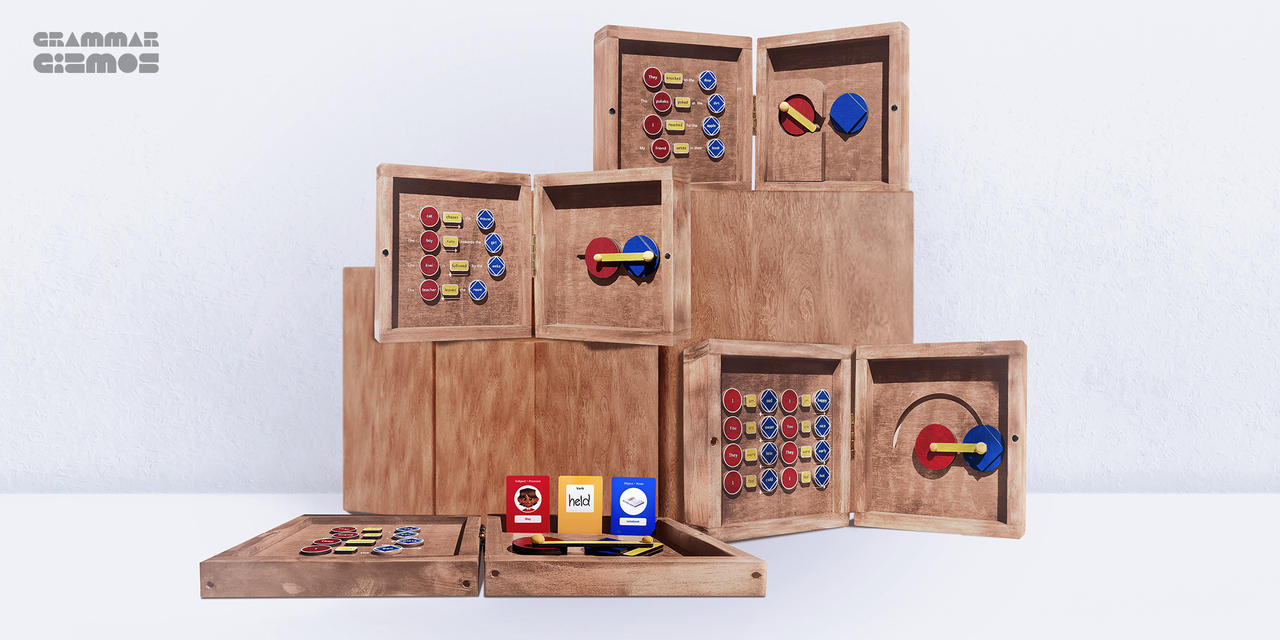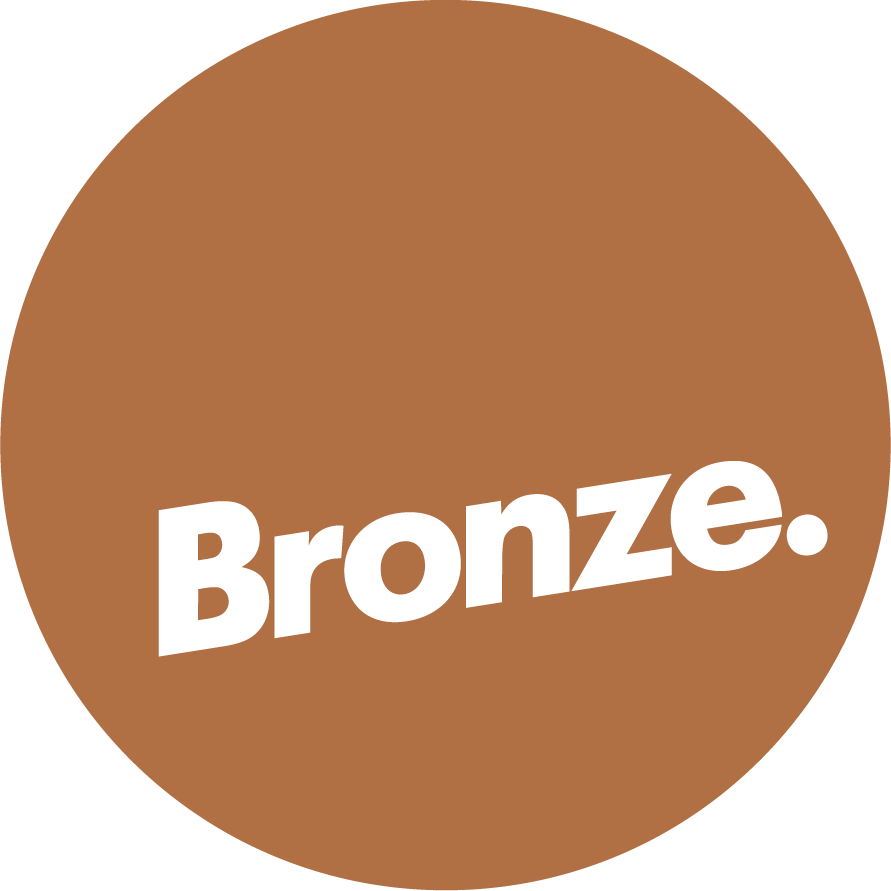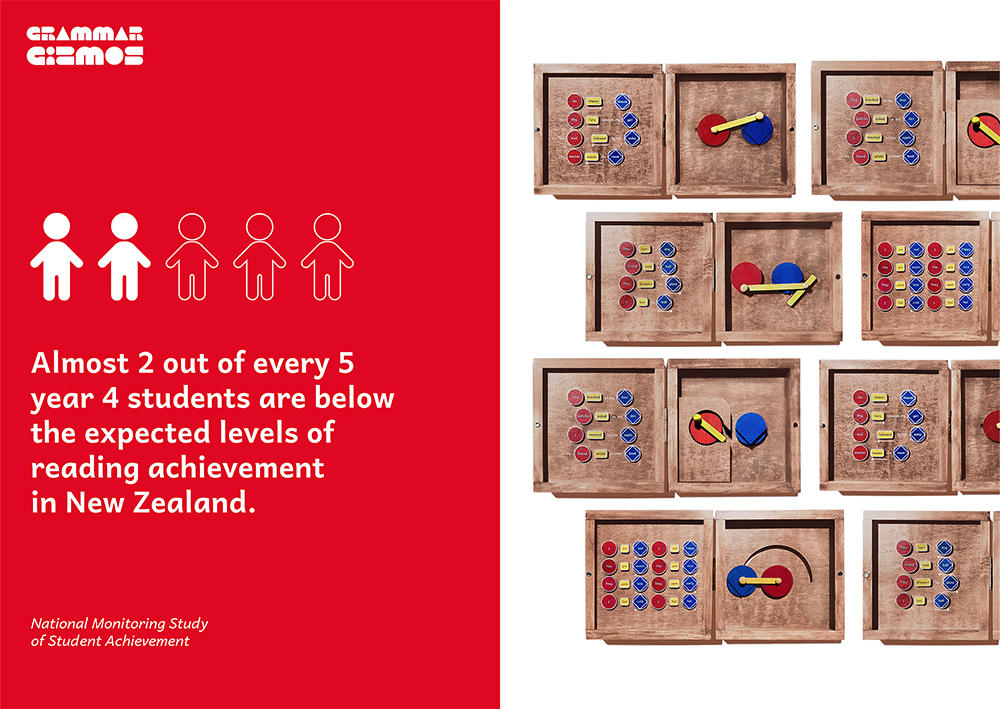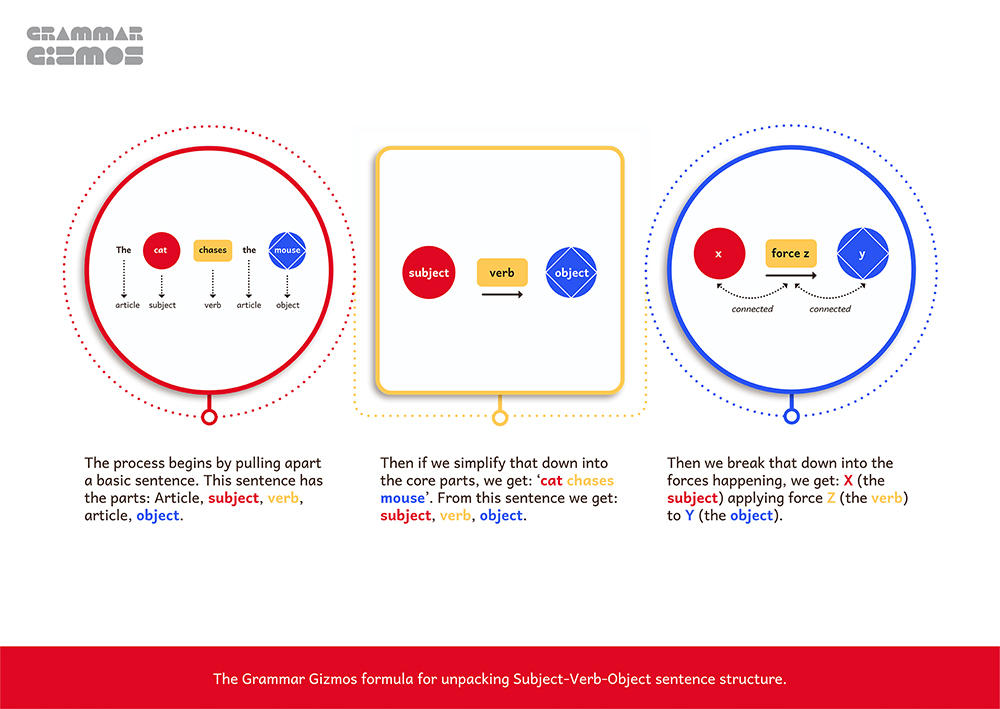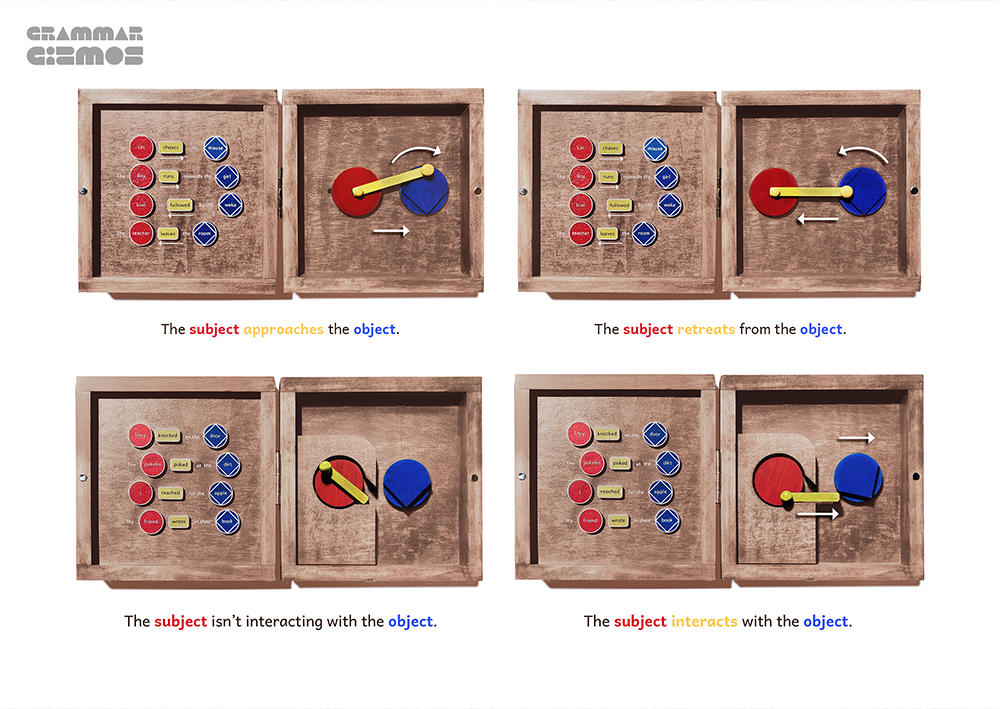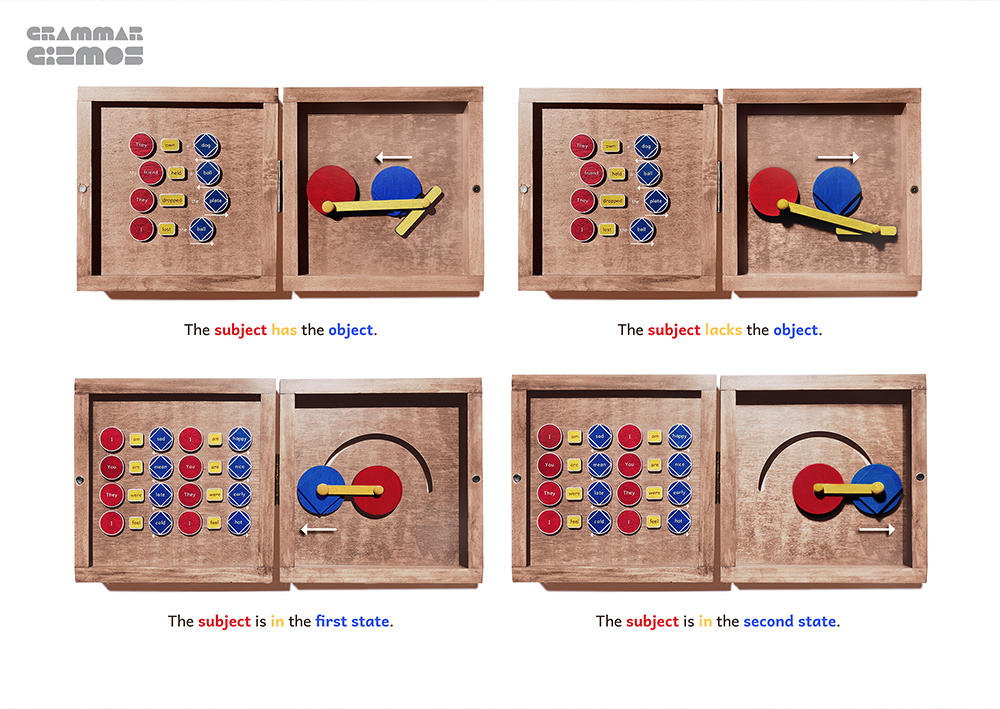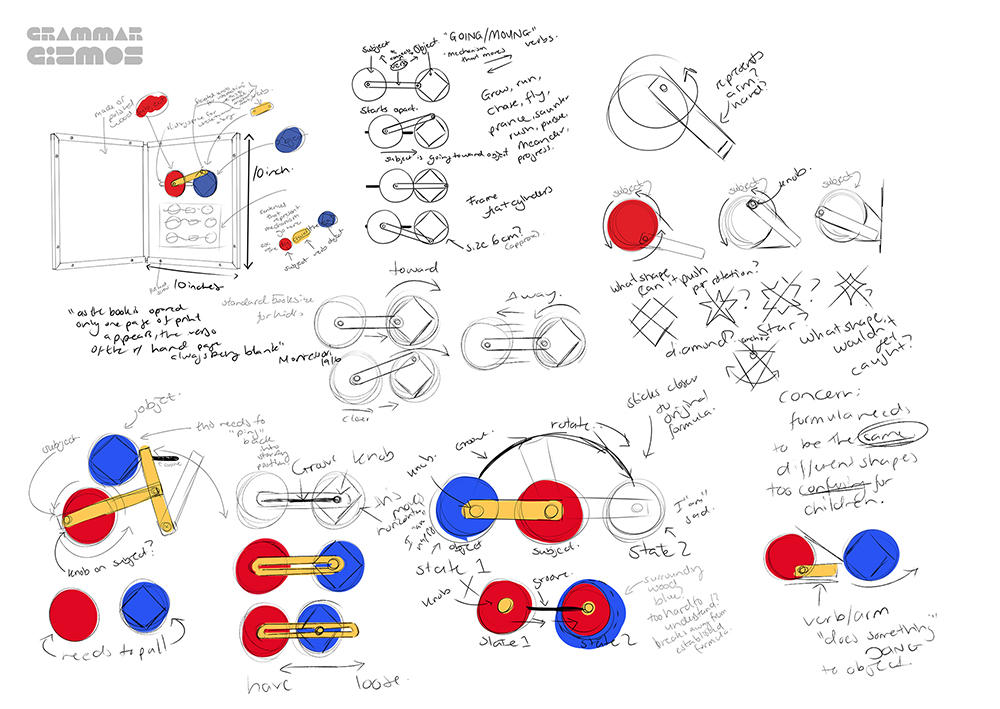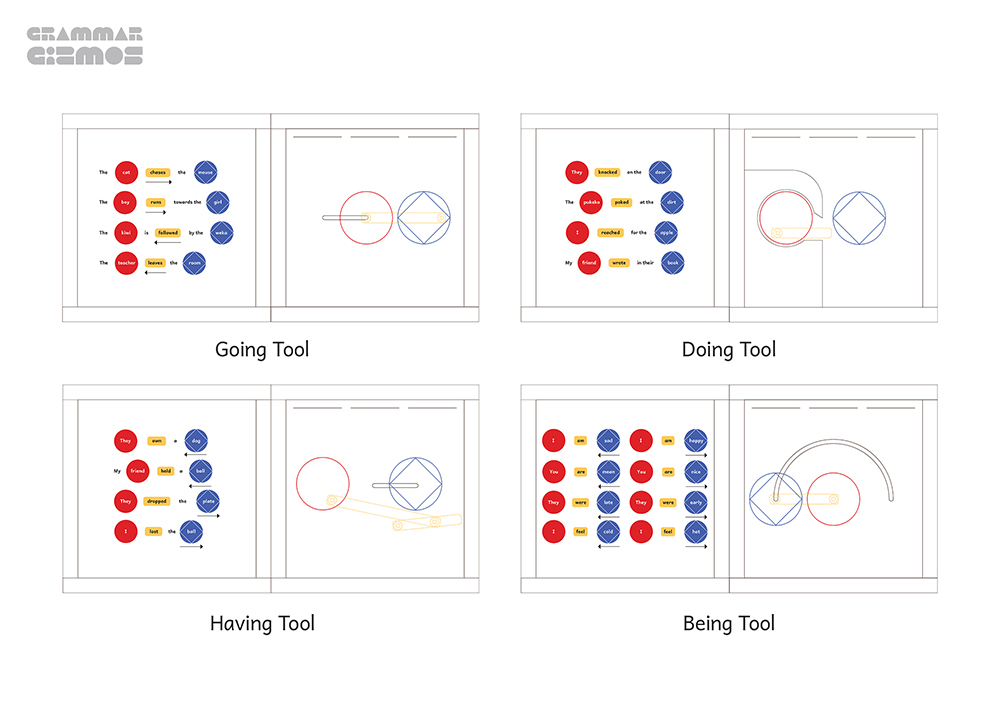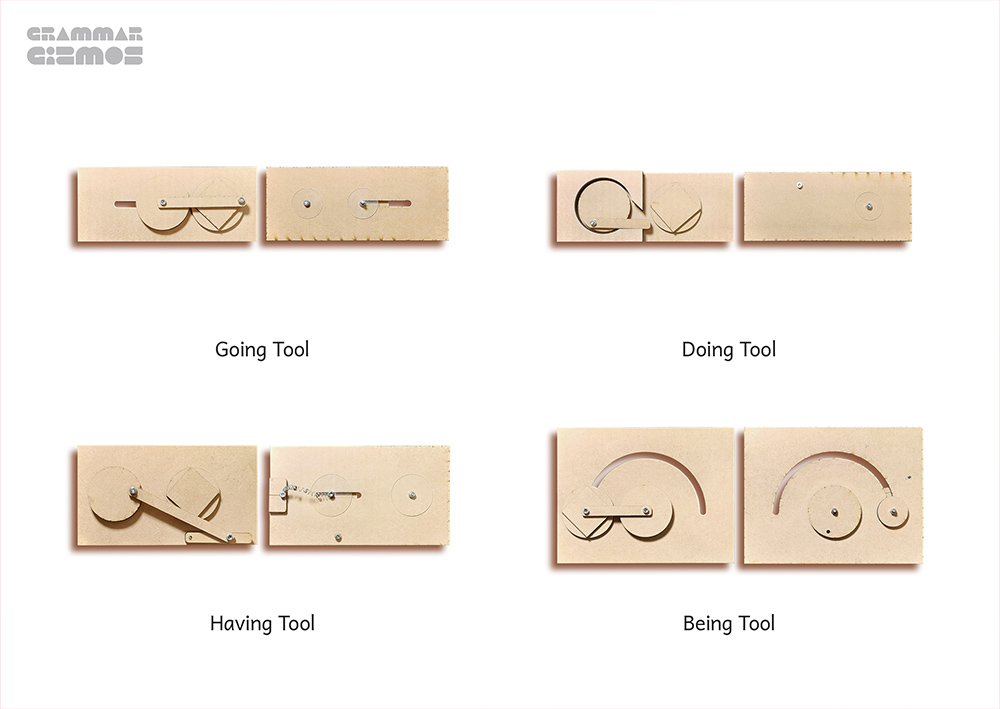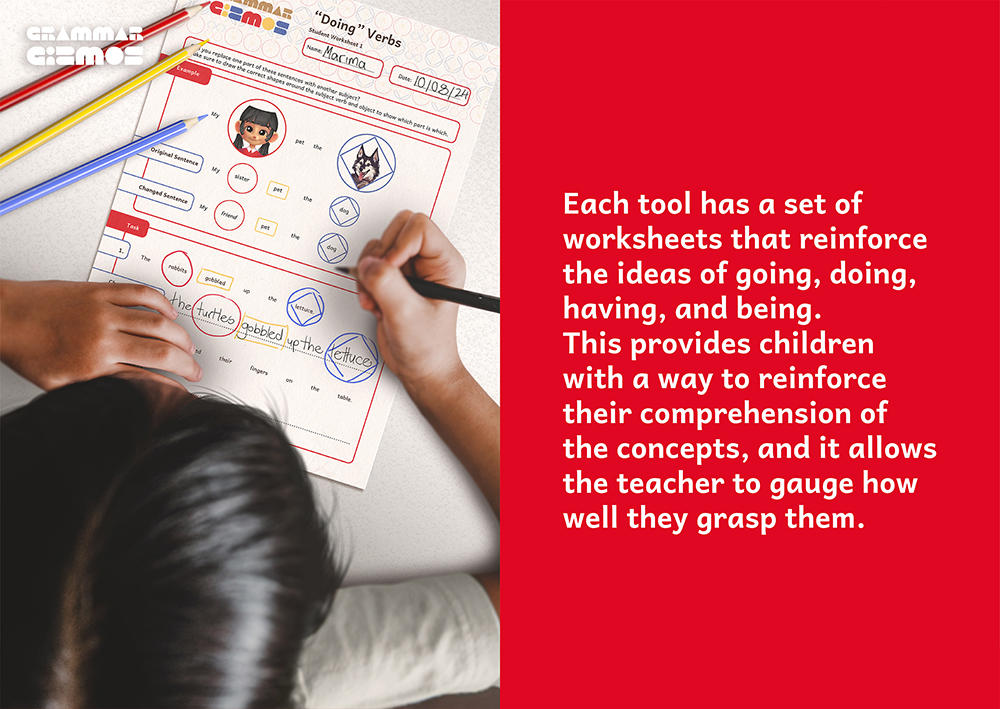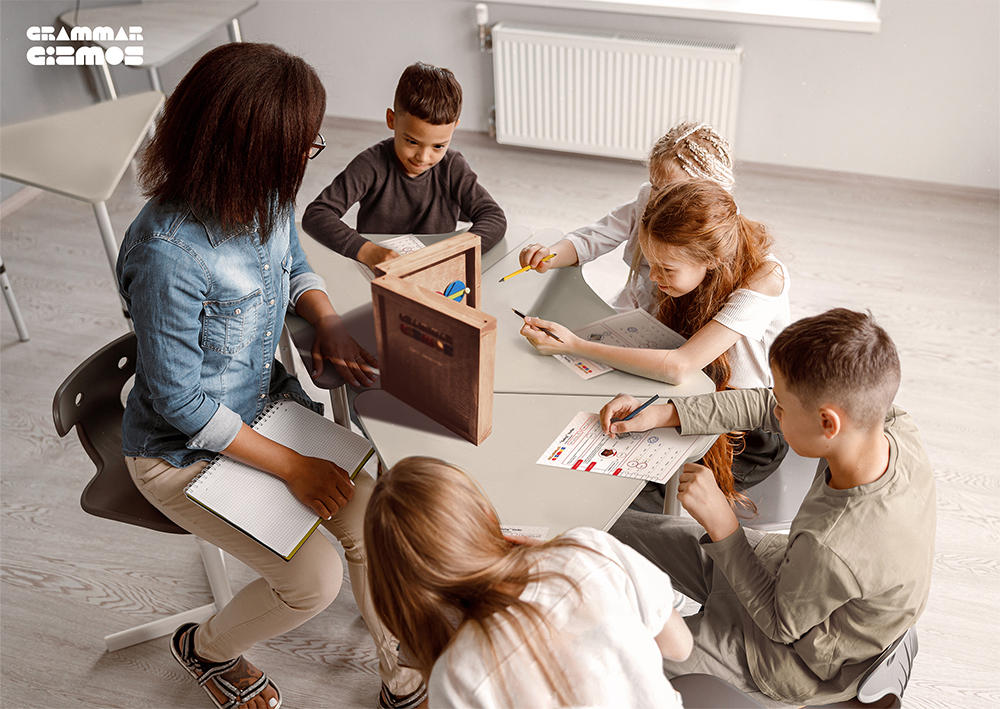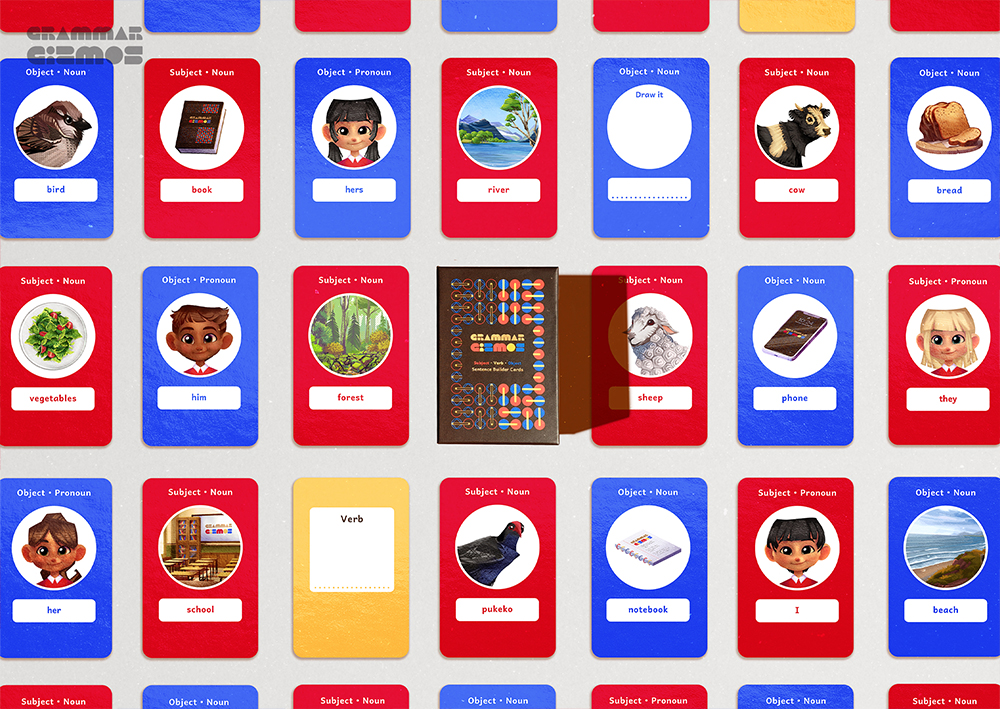Grammar Gizmos
Introduction
Grammar Gizmos, in its simplest form, is a set of four wooden tools that house an interactive grammar system
composed of interconnecting colour-coded shapes that represent parts of speech.
As it stands now, nearly two in five ākonga are below expected achievement levels in Year 4 [1].
It's clear that children just aren't being switched on by the way literacy is currently being taught,
and teachers need new tools in their toolbelt. Quite bluntly, if children are struggling to read, they’re struggling to learn.
The problem I set out to solve was creating an interactive set of physical tools that break down the key parts, connections,
and actions in Subject-Verb-Object (SVO) structured sentences for children aged 7–8, bringing elements of touch and play to something that so rarely sees it.
N.B. The physical copies of the toolset were produced by Embrace Design in Wellington. Concept, design and all imagery produced by Pixel Ponderer.
The Brief
In 16 weeks - Research and develop a body of work to test the validity of media and concepts, or experiment. The primary purpose of basic research is discovery, interpretation or development of a particular subject of your choice.
My Role
Solo Project - Led the project as primary and secondary researcher, including creative direction, mockup and illustration, testing and surveys. Developed and conceptualized the product and all collateral. All pitching and presentations.
Field of Practice
System design, literacy learning tool development, visual collateral, illustration, and publication design.
Medium
Wooden literacy learning tool design, testing and surveys, brand system and guidelines, publication design, printed cards.
The Solution
The core element in Grammar Gizmos is the interactive shape sentences, which bring hands-on interactivity to language learning by linking physical shapes and colours to parts of speech, drawing inspiration from Montessori solids. With our foundation of interactive shapes representing parts of speech and wood, we now come to the question: Why these four types of verbs? The more I dug into linguistics during the beginning of this project, the clearer it became. When you break it all down, almost every verb fits into one of four main categories:
Going – Verbs that describe movement or change.
Doing – Verbs that describe an action or process.
Having – Verbs that describe possession.
Being – Verbs that describe states of existence.
The Going Tool is about the subject of the sentence going toward or away from the object, exploring the direction of action in sentences.
The Doing Tool explores sentences where the subject is performing an action which results in the object of its sentences changing or reacting in response.
The Having Tool focuses on the subject and whether or not it’s in a state of having the object of the sentence.
The Being Tool explores how the subject gets from one state of being to a different state of being and what transitional things happen to get from one state to another.
Testing, Development and Supporting Materials
Through research, interviews, testing, and surveys with NZ educators, I made sure each component taught the key concepts while being accessible and engaging. The use of basic shapes and bold colours keeps things simple and consistent, reinforcing the key formula across all the tools. The font, Andika[2], was picked because it was designed with beginner readers in mind, making literacy learning that bit easier. The toolset includes a classroom guide that begins by connecting the four verb types to real-life situations, encouraging students to think about personal experiences related to the tool being explored. To cement their understanding, they first match these concepts to the sentences on the left side of each tool. Then, with the sentence-building cards, they get hands-on, feeling out how words work together in a sequence. To wrap it all up, the core concepts are reinforced through worksheets that match up with each of the different tools.


